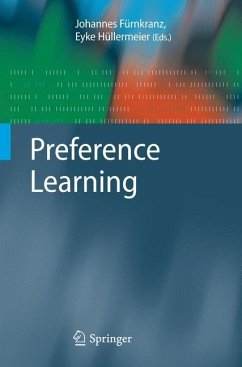The topic of preferences is a new branch of machine learning and data mining, and it has attracted considerable attention in artificial intelligence research in previous years. It involves learning from observations that reveal information about the preferences of an individual or a class of individuals. Representing and processing knowledge in terms of preferences is appealing as it allows one to specify desires in a declarative way, to combine qualitative and quantitative modes of reasoning, and to deal with inconsistencies and exceptions in a flexible manner. And, generalizing beyond training data, models thus learned may be used for preference prediction. This is the first book dedicated to this topic, and the treatment is comprehensive. The editors first offer a thorough introduction, including a systematic categorization according to learning task and learning technique, along with a unified notation. The first half of the book is organized into parts on label ranking, instance ranking, and object ranking; while the second half is organized into parts on applications of preference learning in multiattribute domains, information retrieval, and recommender systems. The book will be of interest to researchers and practitioners in artificial intelligence, in particular machine learning and data mining, and in fields such as multicriteria decision-making and operations research.
From the reviews:
"The book looks at three major types of preference learning: label ranking, instance ranking, and object ranking. ... chapters contain case studies and actual experiments to illustrate the claims made within. ... this is a useful book in an emerging and important area, and hence would be of interest to machine learning researchers. The book is quite readable to that audience, despite a heavy emphasis on formal treatment." (M. Sasikumar, ACM Computing Reviews, September, 2011)
"The book looks at three major types of preference learning: label ranking, instance ranking, and object ranking. ... chapters contain case studies and actual experiments to illustrate the claims made within. ... this is a useful book in an emerging and important area, and hence would be of interest to machine learning researchers. The book is quite readable to that audience, despite a heavy emphasis on formal treatment." (M. Sasikumar, ACM Computing Reviews, September, 2011)








